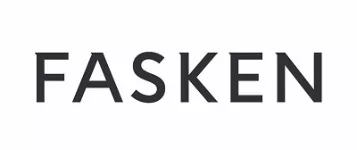On August 17, 2021, the Department of Finance published the Financial Consumer Protection Framework Regulations (the "Regulations") in the Canada Gazette. This comes almost three years after the government introduced Bill C-86, Budget Implementation Act, 2018, No. 2 ("Bill C-86"), which laid the foundation for the government's new financial consumer protection framework (the "Framework").
Background to the Regulations
In 2018, two reports by the Financial Consumer Agency of Canada (the "FCAC") highlighted areas where improvements could be made to better protect consumers and further strengthen regulatory oversight of banks in Canada (see Report on Best Practices in Financial Consumer Protection, which assessed the best practices in provincial and territorial consumer protection regimes, and Domestic Bank Retail Sales Practices Review, which reviewed the sales practices employed by Canada's six largest banks).
In response to the FCAC reports, the government introduced Bill C-86 which, among other things, strengthened the FCAC's mandate and powers and introduced the Framework, which contained some of the most sweeping consumer protection provisions ever proposed for banks and authorized foreign banks ("institutions") operating in Canada (see Fasken Bulletin: Federal Government Introduces Significant New Consumer Protection Framework for Customers of Banks – Bill C-86).
On December 13, 2018, Bill C-86 received royal assent. Since then, industry has been waiting with bated breath for the release of the Regulations in order to understand the full scope of the Framework. The wait is finally over.
Final Piece of the Puzzle
The Regulations largely streamline and consolidate existing requirements for institutions that are found in 23 different existing regulations. That said, the Regulations do contain new obligations for institutions.
Of the new obligations contained in the Regulations, the five key elements are:
- access to basic banking;
- improving the timeliness of institutions' complaint-handling process;
- clarifying the scope of the Framework;
- updating disclosure requirements with respect to liability for unauthorized credit card transactions; and
- prescribing new disclosure requirements for deposit type instruments at renewal.
Access to Basic Banking Services
The Regulations will raise the maximum amount of a Government of Canada cheque that a member bank (i.e., a bank that is a member of the Canada Deposit Insurance Corporations) must cash, free of charge, for a consumer from $1,500, to $1,750. According to the government, this is being done to reflect rising benefit levels for minimum income programs (e.g. Old Age Security, Canada Pension Plan). Since the maximum amount that must be cashed is increasing, Public Services and Procurement Canada has started to update the indemnification rules to reflect this change.
Complaints Handling Processes
Currently, there are no requirements on institutions to deal with customer complaints in a specific number of days, only FCAC guidance that request institutions resolve such complaints within 90 days from the day a complaint is escalated to an employee designated to deal with complaints. During the consultation process, institutions had expressed a preference for a complaint handling period that was longer than 60 days. However, the Regulations will require institutions to deal with consumer complaints within 56 days following the day a complaint is made. This is intended to improve the timeliness of the complaint-handling process for consumers and, according to the Department of Finance, align Canada with international best practices for bank complaint handling. A 56 day time period is consistent with the standard set by the United Kingdom.
Clarifying the Scope of the Framework
The Framework includes a number of general requirements that apply to all "products and services" offered or sold by an institution. To ensure that this expression does not inadvertently capture derivatives and eligible financial contracts (financial instruments that are not captured by the current legislative framework), the Regulations clarify that for the purposes of Part XII.2 (Dealings with Customers and the Public), a "derivative" as defined in subsection 415.2(2) of the Bank Act and an "eligible financial contract" as defined in subsection 415.2(3) of the Bank Act are not included in the expression "products or services".
Liability for Unauthorized Credit Card Transactions
The Framework made changes to the limits on the liability of a customer for unauthorized use of a credit card. To reflect these changes, the Regulations prescribe the following updated information that must be disclosed to consumers:
- an institution cannot hold a consumer liable for more than $50 for unauthorized credit card transactions unless the consumer has demonstrated gross negligence or, in Quebec, gross fault in protecting their card, PIN, or their account; and
- a consumer is not liable for fraudulent transactions that occurred after reporting to their institution that credit card information or personal authentication information has been lost or stolen or is otherwise at risk of being used in an unauthorized mannered risk.
Disclosure of the Interest Rate for Deposit Type Instruments on Renewal
The Framework imposed a new requirement on institutions to disclose the interest rate for a deposit type instrument (e.g., GICs) 21 days and five days before renewal. The Regulations clarify that institutions can disclose this rate by directing the consumer to a website or telephone number where they can obtain the current rate.
Other Changes
The Regulations do not contain the requirements under the existing Cost of Borrowing Regulations that prescribed certain font sizes and formatting that must be used in the information boxes. The Regulations also contain new exceptions for what will be considered prescribed information in the case of a prescribed affiliate that is an insurance company for the purposes of a Canadian bank's public accountability statement.
Looking Ahead
The Regulations are scheduled to come into force June 30, 2022, giving institutions just over 10 months to implement these new requirements.
While these Regulations have been eagerly awaited for several years, the bulk of the changes do not result in any substantive policy change to the financial consumer protection regulations to which institutions are currently subject. Institutions will continue to be required to comply with federal and/or provincial consumer protection laws as they apply to their operations.
The content of this article is intended to provide a general guide to the subject matter. Specialist advice should be sought about your specific circumstances.




